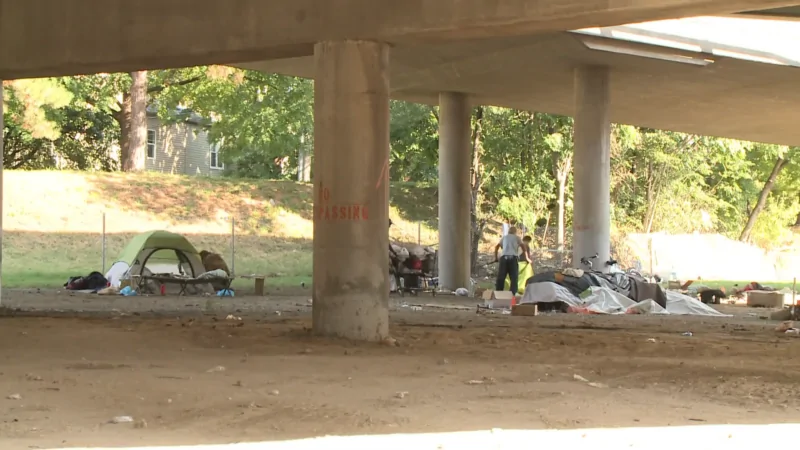Today, we are going to talk about St. Louis, Missouri, and what’s happening with its population in 2025.
Spoiler alert: it’s not all rainbows and butterflies, but it’s definitely worth a closer look.
Get ready for some surprising stats and a bit of real talk about what it means to live in St. Louis today.
Table of Contents
ToggleKey Statistics
1. Population Snapshot
According to World Population Review, St. Louis is home to an estimated 277,315 people in 2025.
At first glance, that might sound like a significant number, reflective of a bustling urban center. But let’s not celebrate just yet, the population growth rate tells a different story. St. Louis is experiencing a decline, with a current growth rate of -1.58%.
That’s right: negative growth. Rather than expanding, the city has been gradually losing residents over the past several years.
Since 2010, the population has decreased by an alarming 13.17%. This trend is certainly concerning, especially if you’re a city planner or someone invested in the future vitality of St. Louis.
Compounding the issue, St. Louis faces challenges in mortality rates, which have also contributed to the population decline. High mortality, combined with a drop in new arrivals and births, paints a bleak picture for growth.
The current trend indicates the need for strategic action to reinvigorate the city’s appeal, encourage residents to stay, and attract new people to call St. Louis home.
Addressing economic opportunities, quality of life, and public health are all critical to reversing this downward trajectory and ensuring that St. Louis can thrive well into the future.
2. Size Matters

Even with the recent decline in population, St. Louis still holds its position as the 5th largest county in Missouri, according to News Leader.
The city’s current population density is around 4,473 people per square mile, which indicates that while people are leaving, there’s still a sizable community calling St. Louis home.
For those who prefer a bit of extra space, the decline might not be all bad news. With fewer people, there’s a little more elbow room compared to previous years, offering a potentially more comfortable living experience for those who stay.
It is still far from being empty, but residents may find a bit more breathing space in neighborhoods that were once more densely packed.
It’s worth noting that the last measured population density in 2018 was significantly higher, at 5,028 people per square mile, as we can see in the OpenDataNetwork report.
The drop to 4,473 per square mile is a clear reflection of the broader trend of population decline, which has had a direct impact on how crowded, or not, parts of the city feel today.
While a lower density can mean less traffic and more open space, it also raises questions about how the city can adapt and thrive with a smaller population base.
3. Racial Composition
St. Louis is a diverse city. Neilsberg report shows us that the racial breakdown is:

Efforts to bridge the gaps among these communities have been ongoing, with numerous grassroots organizations and local initiatives dedicated to addressing inequalities and fostering inclusivity.
Community groups work tirelessly to provide support, whether through educational programs, healthcare access, or economic opportunities, to ensure that diversity in St. Louis becomes a strength rather than a source of division.
The city’s diversity is one of its greatest assets, as well as one of its biggest challenges.
4. Age and Gender Dynamics

As DataUsa states, the median age in St. Louis is 36.5 years, illustrating a city that finds itself at the crossroads between youthful vigor and mature experience.
Of the 242,828 adults residing in St. Louis, a notable segment is composed of seniors. In fact, 43,123 of these adults are aged 65 and over.
Seniors in St. Louis are engaged in various community activities, from volunteer work to cultural initiatives, adding depth and perspective to the city’s collective narrative.
When it comes to gender, St. Louis exhibits a well-balanced ratio, contributing to a diverse and inclusive social environment. According to InfoPlease, 51.7% of the population is female, while 48.3% is male.
The gender balance is reflected in various aspects of city life, from the workforce to leadership roles in business, education, and local government.
5. Homeownership

Homeownership in St. Louis stands at 44.9%, meaning that less than half of the residents own their homes. This low rate of homeownership highlights how prevalent renting is in the city, and it has far-reaching effects on many aspects of life in St. Louis.
Renting, as opposed to owning, influences community stability, economic development, and even local politics.
A high proportion of renters can sometimes mean greater residential turnover, which may lead to less neighborhood cohesion and a weaker sense of community identity.
When people do not feel deeply invested in the areas where they live, they may be less likely to participate in neighborhood initiatives, contribute to local improvements, or engage in civic activities. On the financial front, St. Louis is projected to see an 11.7% decline in housing prices for 2024, according to Herman London.
Privately owned U.S. housing starts decreased to a seasonally adjusted annual rate of 1.277 million units in May—down 5.5% from the prior month’s downwardly revised rate of 1.352 million and down 19.3% from a year earlier https://t.co/etk23fCFyM pic.twitter.com/HtMx80aJtJ
— St. Louis Fed (@stlouisfed) June 22, 2024
Falling home prices can create concerns about decreasing property equity for current homeowners, which could deter potential buyers from investing in the St. Louis housing market.
On the other hand, the dip in housing prices may present an opportunity for renters to enter the market and become first-time homeowners if they can access the necessary resources and financing.
It’s also worth noting that the St. Louis Metro area has experienced a decline in home sales by 6.58% in the past year, ending in April 2024, as reported by St. Louis Real Estate News.
6. Poverty Rate

According to official statistics from the City of St. Louis, we can see that the overall poverty rate in St. Louis stands at 18.57%, which means that nearly one in every five residents struggles to make ends meet.
The same report by the City of St. Louis states the following:
In St. Louis County, an estimated 14.30% of children aged 0-17 live in poverty, according to Trading Economics statistics. These numbers expose the deep inequalities that exist within St. Louis, where poverty disproportionately affects specific racial and ethnic groups. This figure reflects a significant portion of the population facing financial hardship, impacting their ability to afford necessities like: The presence of child poverty is particularly concerning, as it perpetuates a cycle of disadvantage that can be difficult to break without targeted intervention. Education is an important indicator of a community’s socio-economic potential, and in St. Louis, the data reveals some significant insights. The breakdown of local education looks like this, according to StatisticalAtlas: For almost half the adult population, education ends after high school, which may have a considerable impact on their economic opportunities. When it comes to higher education, the numbers are even more telling. When fewer high-paying jobs require advanced skills, residents may be less incentivized to pursue college or technical education. Moreover, the scarcity of economic opportunities may make higher education seem like an unattainable goal for many residents. White adults represent 70.0% of all adults with bachelor degrees in St. Louis, despite making up 49.3% of the overall adult population as per the City of St. Louis official website. St. Louis Public Schools contain 67 schools and 18,747 students, with 90% minority enrollment. Furthermore, 73.9% of students are economically disadvantaged, according to the U.S. News Education reports. The vast majority of residents speak English as their primary language. English dominates as the primary language, spoken by 90.84% of the population. This overwhelming majority means that most of the city’s communication, education, and public services are geared toward English speakers. Everything from local governance to healthcare services and school curriculums operates primarily in English, making it the default medium for most aspects of life in St. Louis. When it comes to other languages, the breakdown looks like this according to Stacker: About 66.2% of the working-age population is in the labor force, with an unemployment rate of 5.4%. The city’s economy is supported by diverse employment sectors, but the unemployment rate highlights ongoing challenges in job availability and economic stability. STEM employment in the Greater St. Louis area constitutes 6.6% of total employment, with an average annual salary of $86,790, as per Greater St. Louis, Inc. As of May 2024, the St. Louis metropolitan statistical area had a civilian labor force of approximately 1,511.1 thousand people, with 1,451.9 thousand employed, Bureau of Labor Statistics reports. Seniors make up a significant portion of the adult population in St. Louis, yet the city struggles with a workforce participation rate that doesn’t seem to fully utilize the potential of all its residents. Balancing the needs of an aging population while invigorating the workforce is a tightrope walk that St. Louis continues to navigate, and it’s one that will require careful planning and innovative solutions. To address these challenges, St. Louis needs comprehensive strategies that: The data presented in this content about St. Louis was gathered from a variety of credible sources to provide an accurate and holistic picture of the city’s current demographic, economic, and social conditions in 2024. The research involved collecting information from government publications, reports, and databases, such as the City of St. Louis official website and Bureau of Labor Statistics, to ensure the data’s reliability. Statistical analyses and key figures were obtained from reputable third-party research groups, including World Population Review, Neilsberg, and Trading Economics, which provide updated and well-documented demographic insights. To explore specific topics like population density, racial composition, and educational attainment, data was sourced from institutions specializing in demographic research, such as DataUsa, StatisticalAtlas, and InfoPlease. Moreover, information on housing, poverty rates, and economic challenges was derived from sources like Herman London, St. Louis Real Estate News, and U.S. News Education, which offer relevant statistics on homeownership and economic status. Living in St. Louis means being part of a city with a rich history and a complex present. The numbers tell a story of a city in flux, facing challenges head-on while holding onto its diverse and vibrant character. St. Louis has its fair share of struggles, but it’s also a city with heart and potential. The real challenge lies in leveraging that potential to create a brighter future for all its residents.
7. Education Levels
8. Language
Language
Speakers
Speak English Very Well
Speak English Less Than Very Well
Spanish
56,818
38,982
17,836
Chinese (incl. Mandarin, Cantonese)
14,539
8,276
6,263
Serbo-Croatian
12,705
7,445
5,260
Vietnamese
8,039
3,012
5,027
German
7,876
6,557
1,319
9. Employment and Workforce
10. Seniors and the Workforce
Methodology
Final Thoughts
Sources
Related Posts:












